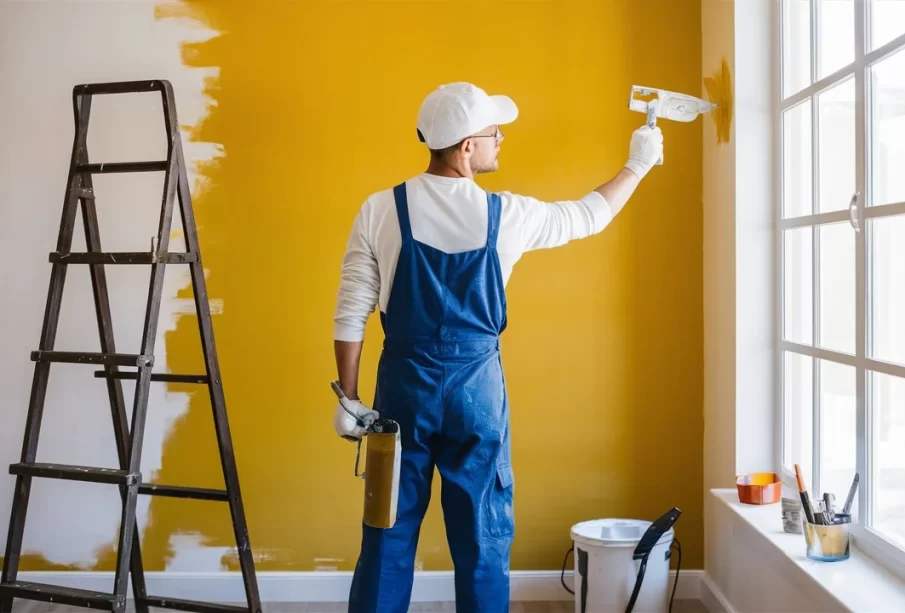Top 7 Things to Consider Before Painting the House

Painting your home is an important project that needs careful planning and consideration. There are many factors to consider to achieve a long-lasting and successful paint job. For those looking for house painting services in West Auckland, the top seven factors to consider when painting your home are explained in detail.
1. How To Choose The Right Paint
The right paint can make a huge difference in terms of durability and aesthetics. There are many types of paints and finishes that can be used for various purposes. Consider these factors:
Types of paint
- Water Based (Latex Paint): Ideal on most surfaces. Easy to clean, quick drying, and environmentally-friendly.
- Oil Based Paint: Provides a durable, high-traffic finish. However, it has a long drying time, and cleanup requires solvents.
Finishes
- Matte: No gloss, conceals imperfections well but is not very durable.
- Eggshell/Satin: A slightly shiny finish, which is more durable than flat and suitable for bedrooms and living rooms.
- Semi-Gloss/Gloss: Easy to clean and very durable. Perfect for kitchens and bathrooms.
The type of finish and the room it will be used in are all dependent on your preferences, the area, and the surface.
2. Surface Preparation
For a paint job that will last, it is important to prepare the surface properly. This step is crucial to avoid peeling and cracking. What you should do is:
Cleaning
- Remove dirt, grease and stains. Pressure washing may be required for exteriors.
- For interiors, use a mild detergent with water and let surfaces completely dry before painting.
Repairing
- Fill in holes, cracks and dents using appropriate fillers.
- Sand rough areas to achieve a smooth finish.
Priming
- Primer is especially important if you are painting over a dark colour, porous surfaces, or newly installed drywall. Primer ensures that the paint will adhere to the surface and create a uniform finish.
3. Weather Conditions
The weather can have a significant impact on the painting process. This is especially true for exterior painting. The ideal weather conditions will help paint adhere and dry properly.
Temperature
- Avoid painting at extreme temperatures. The ideal temperature range for most paints is between 50degF to 85degF (10degC and 29degC).
- If the temperature is too high, paint may dry out too quickly and cause cracks. Paint that is too cold may not adhere properly.
Humidity
- High humidity can affect paint finish and cause it to take longer to dry. Paint on days that are dry and low in humidity.
- Paint before or during rainy seasons.
4. Color Select
It is exciting and intimidating to choose the right color. The color that you choose can set the tone of your home, and also affect its perception in terms of size and light.
Testing colors
- Test colors on your wall using paint samples. Watch how the colors look under different lighting conditions and at different times during the day.
- Paint a small area to test your choice.
Trends and timeless
- Consider how long you will be happy with the colors. The timeless, neutral colors are more likely to last longer.
- Consider how your color scheme will complement the existing environment and neighborhood.
5. Quality Of Paint And Tools
The outcome of your project can be significantly improved by investing in high-quality tools and paint.
Paint quality
- Paints of higher quality offer greater coverage, longer durability and better color retention. Although they may be more expensive initially, you can save money by using fewer coats and having them last longer.
Tools
- Painter’s tape, rollers and brushes of high quality are recommended. Cheap tools may result in an uneven finish and visible brushstrokes.
- Specialty tools like edgers and extension poles can make the job easier and more professional-looking.
6. Budgeting And Cost Analysis
Budgeting and planning are important when painting your home.
Estimating costs
- To determine the amount of paint needed, calculate the square footage.
- Consider the price of paint, primer, tools and any other supplies, such as drop cloths or painter’s tap.
DIY vs. professional
- Decide if you want to do the work yourself or hire a professional. While DIY projects can be cost-effective, they require time, effort and some degree of skill.
- A professional painter may be more expensive, but they can provide a better finish and save time.
7. Safety And Environmental Considerations
Paints can be hazardous and contain chemicals, so it is important to consider safety and the environment.
Ventilation
- To avoid inhaling fumes, ensure that you have adequate ventilation while painting inside. Open windows and use fans to circulate the air.
- When painting the exterior, pay attention to wind direction in order to avoid breathing spray paint fumes or spray paint.
Protective gear
- Wear protective equipment such as gloves, safety goggles and masks when painting with oil-based paints. Also, wear these items while sanding paint that may contain lead.
Disposal
- Recycle old paints and other painting materials. Check your local regulations on hazardous waste disposal.
- Reduce your environmental impact by using paints that are low in VOCs (Volatile Organic Compounds).
Conclusion
Paint your house can transform the appearance of your home and increase its value. You can achieve a satisfying and successful paint job by carefully considering factors such as the type of paint you use, the surface preparation, the weather conditions, your color choice, quality materials, budgeting and safety. Planning and executing each step with precision will enhance the beauty of the home, as well as ensure that the paint job will last for many years.







